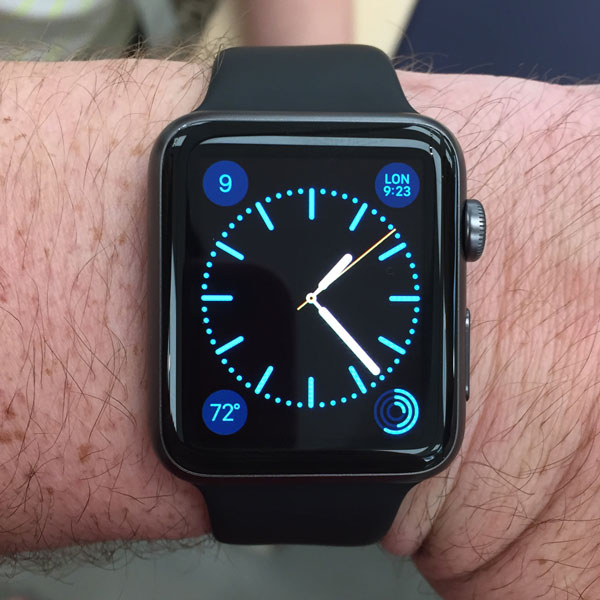Trying out the Apple Watch
We made the trek to Southpark Mall in Charlotte Saturday to check out the Apple Watch. The process was simple. Walk in, tell them your name and they can pull it up the appointment on their device. If you favorited any items in the store app, they can see those, too. The Apple Store employee was great. Well-trained and genuinely excited about the watch.
I tried on several different models, all in the 42mm variety. I really liked the Milanese Loop and the Space Gray Sport. I've seen reviewers complain about the leather loop, but I actually liked it, too.
The watch is smaller and lighter than I expected. My current watch is bigger than the biggest Apple Watch so size and weight wasn't an issue for me.
The watches that you try on are in demo mode, so you can't really interact with them. The demo does include "taps" so you can feel them. The taptic engine is pretty crazy and not at all like what I was expecting. Not really sure how to explain the feeling other than to say that it feels like someone is lightly tapping you on the wrist. It's very subtle.
In the store, it's hard to get a feel for how you will interact with the watch. Watch displays are set up around the outside edges of the store and are connected to iPads that explain the features as you navigate the watch. It's a very well designed experience. However, I don't think you will be able to fully appreciate what an Apple Watch can do until you have it on your arm and it's paired with your phone.
My wife also tried on the Apple Watch and she liked the modern buckle in the 38 mm. She hasn't really been paying attention to the Apple Watch hype so she had lots of questions for the sales guy. She's struggling to figure out how it would work for her. She's a teacher so during the day, the communications functions would be pretty useless for much of the day. But several other features - like fitness and maps - intrigued her.
I'm excited to buy one. I think it will work well for me and my routine. I'm leaning toward the Space Gray Sport. The Milanese Loop is really nice and stainless steel finish gives you more flexibility by matching a wider selection of bands. So I may change my mind.
Other notes from the Apple Store:
- They don't sell the Gold Apple Watch Edition at Southpark. Considering that the cars on display inside the mall included Maseratis and a Ferrari, that should tell you how exclusive the Apple Watch Edition is.
- Apple's going to sell a lot of watch bands. Let's hope that the watch bands will work for at least a few generations. Most people are going to have multiple bands.
- The new MacBook. Wow. Love it in Space Grey. So unbelievably thin. I know there are lots of compromises with it. But once an USB-C ecosystem exists, I could see opting for one of these.
- Bluetooth headphones are going to be necessary to use the Watch while you are running. While I knew that, it puts a new perspective on why Apple purchased Beats.
- I received an email survey after the try on experience. I've written before about how sales people push you to give them the highest score. Well the Apple Store folks didn't do that. They didn't mention the survey to me at all. I used the opportunity to explain the issue I had signing up, but gave the entire experience high marks.







